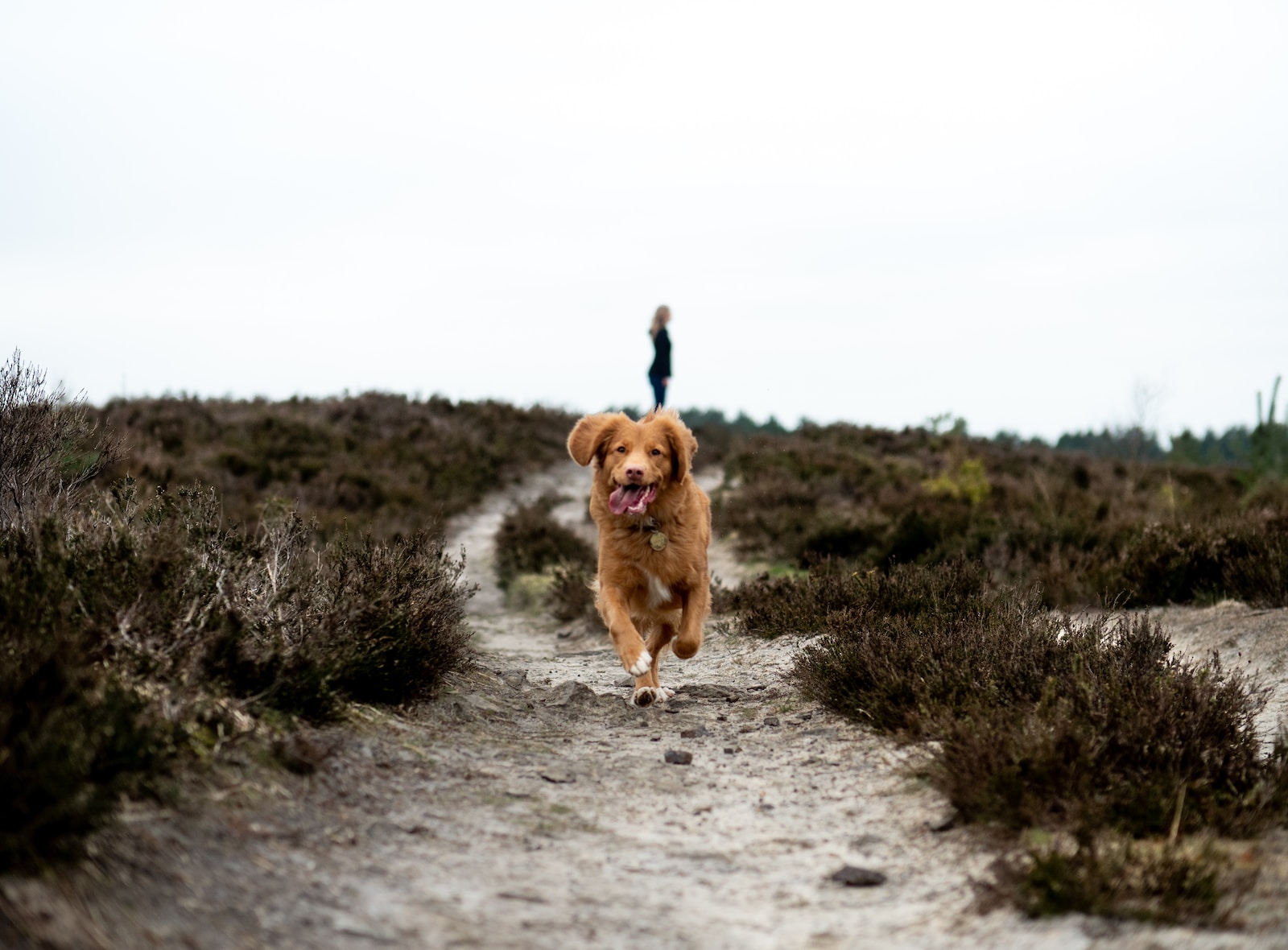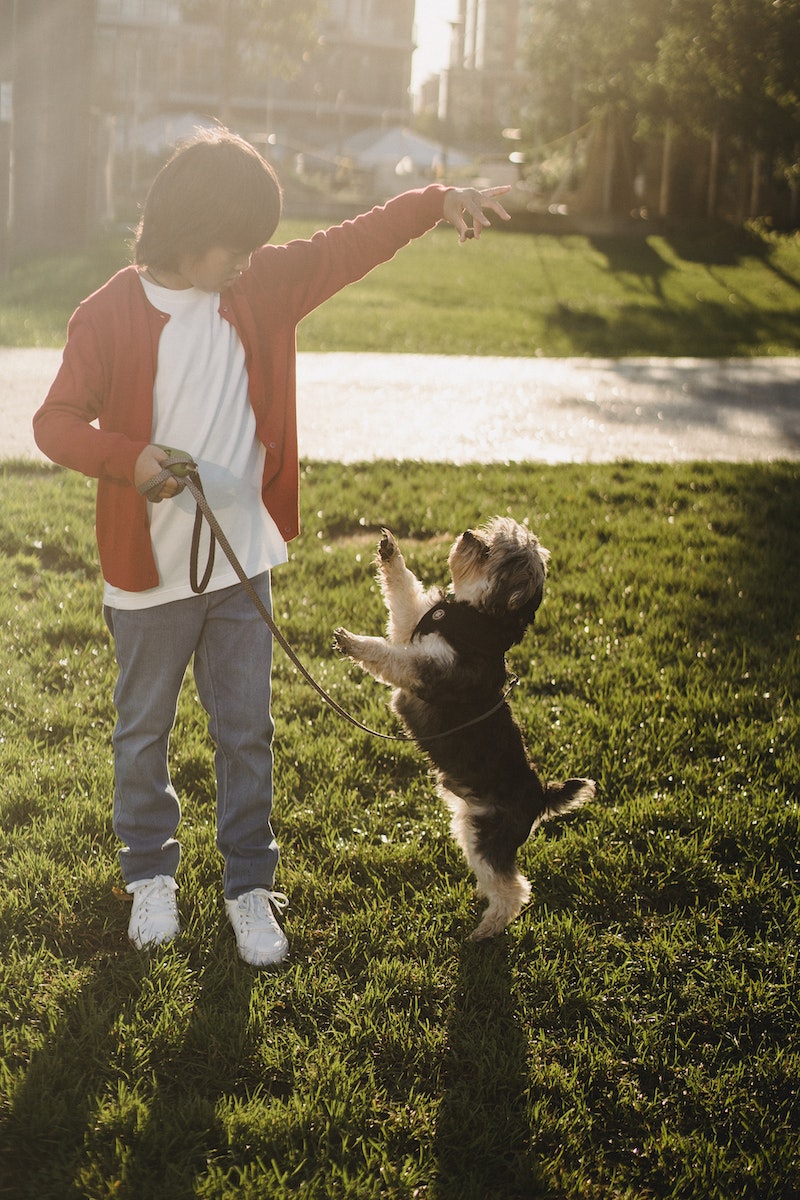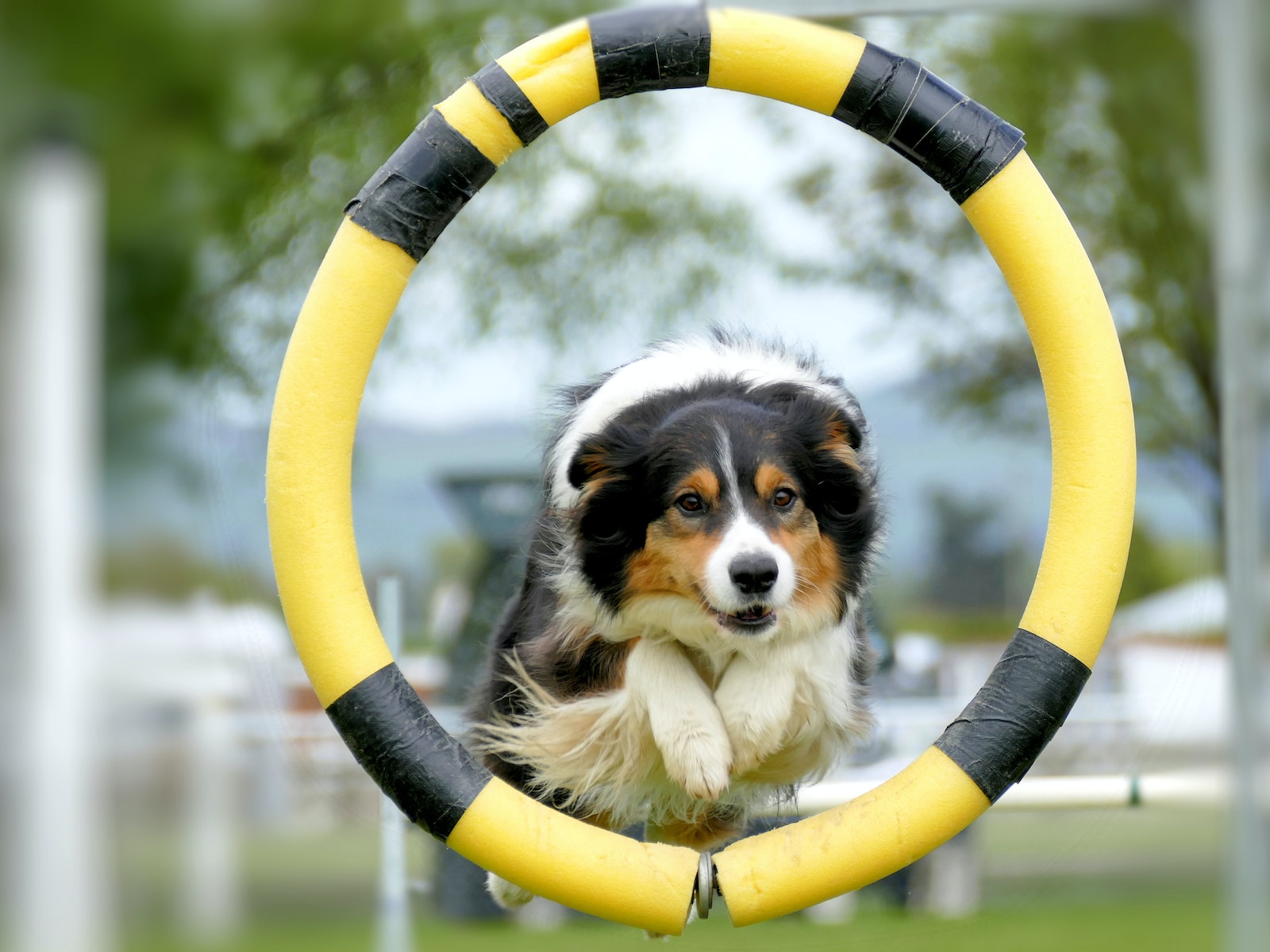Introduction: The Dynamic Doodle Energy
If you’re a Doodle parent, you know one thing for sure—these adorable fur-balls are bundles of energy! From the moment you bring that wriggling puppy home, it’s evident that dog exercise isn’t just an option, it’s a necessity. So, how can you keep your Doodle fit and mentally stimulated? Buckle up, as we explore the best exercise regimens for your energetic Doodle.
Table of Contents
Understanding the Basics: Why Exercise Matters
When it comes to your Doodle’s well-being, exercise is often underscored but seldom deeply discussed. We all know a good run in the park is beneficial, but the science of dog exercise is multifaceted and extends way beyond just letting your dog roam free in the yard.
The Physical Benefits: More Than Just a Good Run
1. Cardiovascular Health
One of the most obvious benefits of regular exercise is improved cardiovascular health. Just like humans, dogs also need to keep their heart and lungs in optimal condition. Regular bouts of exercise help increase lung capacity and improve blood circulation. BetterHealth provides an excellent discussion about the cardiovascular benefits of dog walking, which are equally beneficial for the pet parent.
2. Weight Management
Obesity in dogs is a growing concern. Lack of exercise can lead to weight gain, which in turn puts your Doodle at risk for a host of health issues, including diabetes and joint problems. Consistent exercise helps maintain an ideal weight, keeping such problems at bay.

3. Muscle Tone and Bone Health
Let’s not forget that exercise also plays a significant role in strengthening muscles and bones. This is particularly vital as your Doodle ages. A fit dog is less prone to injuries and can more easily adapt to various physical activities.
4. Hormonal Balance
Regular physical exercise also aids in the regulation of hormones. For instance, exercise stimulates the release of endorphins, which are natural mood lifters. This is not only beneficial for the dog but also for the owner. The mood-boosting effects of spending active time with your dog are well-detailed in this HelpGuide article.
The Mental Aspect: Stimulating That Doodle Brain
While the physical benefits of dog exercise are often the highlight, the mental aspect is equally significant but less talked about. A well-exercised Doodle is a well-behaved Doodle.
1. Mental Sharpness
Various activities like fetch, agility courses, and even simple games like “Find the Toy” engage your Doodle’s brain, keeping them sharp and alert. These activities require a level of problem-solving and decision-making that provides excellent cognitive stimulation.

2. Emotional Well-being
Exercise also has a calming effect on your Doodle’s mind. Activities tire them out and reduce excess energy, which might otherwise manifest as destructive behaviors like chewing furniture or incessant barking. The mental health aspect of dog exercise is often overlooked but is vital for a balanced and happy pet.
3. Social Skills
Activities that involve interaction with other dogs or people can help improve your Doodle’s social skills. Whether it’s a doggy playdate or a group dog walking session, these activities provide excellent mental stimulation and teach your Doodle valuable social behaviors.
4. Training Opportunity
Exercise sessions are also great opportunities for reinforcing training commands and improving communication between you and your Doodle. The behavioral benefits of this cannot be overstated.
By integrating both physical and mental elements into your Doodle’s exercise regimen, you create a holistic approach to their well-being. With both human and pet obesity on the rise and an increasing number of people facing mental health challenges, the importance of dog exercise can’t be emphasized enough. Start off by understanding these basics, and you’ll be on your way to a healthier, happier life for both you and your Doodle.
The Exercise Menu: Types of Doodle-Appropriate Workouts
Regular exercise is essential for your Doodle’s overall well-being, but how do you pick the right type of workout for your furry friend? From the classics like walking to more advanced activities like agility training, each form of exercise offers unique benefits. Here’s a menu of Doodle-friendly workouts to consider:
1. Walking: The Classic Routine
While walking may seem like a basic, no-thrills type of exercise, it’s a cornerstone in the realm of dog exercise. The beauty of walking is in its simplicity and versatility. You can scale the level of exercise based on the needs of your Doodle: from a slow meandering stroll for senior dogs to a brisk walk for those energetic puppies.
However, where most Doodle parents go wrong is monotony. The same route every day becomes boring, not just for you but for your Doodle too. The key is to diversify. Try to change your walking routes regularly and opt for paths that offer varying sensory experiences—different terrains like grass, gravel, or sand, and environments like parks, woods, or urban settings. Each offers your Doodle unique smells, sights, and textures to explore, keeping their walks interesting and engaging. Think of it as a ‘sensory gym’ where your Doodle gets to experience new stimulants, making every walk an adventure.
2. Fetch: Good for Both Your Arms and Their Legs
Fetch is often reduced to a simple throw-and-chase game, but this classic activity can be turned into an incredibly versatile and enriching experience. It’s not just a physical exercise; it’s a mental workout and an opportunity for obedience training.
For instance, before throwing the ball, ask your Doodle to ‘sit’ or ‘stay,’ then command ‘go’ when you throw. This makes the game more challenging and engages your dog’s brain as well as its muscles. You can also integrate commands like ‘drop it’ when your Doodle returns the ball, turning the game into a training session. If your Doodle loves water, take the game to a safe pond or lake and let them fetch from water, providing a different set of challenges and stimuli.
3. Agility Training: The Doodle Olympics
When it comes to the echelon of Doodle exercises, agility training is like the Olympics. It’s a high-energy, dynamic form of exercise that challenges your Doodle both physically and mentally. Agility courses often involve a range of obstacles like hurdles, tunnels, and weave poles, which force your Doodle to think and react quickly.

However, what most people don’t know is that you don’t need a professional agility course to start. You can set up a mini agility course in your backyard using simple items like hula hoops, cones, and makeshift tunnels. Start with basic commands and easy obstacles, gradually ramping up the difficulty level as your Doodle gets the hang of it. Make sure to offer plenty of rewards and praise to keep your pet motivated.
Not only is agility training excellent for your Doodle’s physical health, it’s a stellar mental exercise that improves focus, discipline, and obedience. Plus, it’s a fantastic bonding activity that strengthens the relationship between you and your Doodle.
By understanding the unique benefits of each type of workout, you can create a balanced exercise regimen that caters to your Doodle’s specific needs and preferences. The key is diversity, both for their body and their brain.
Seasonal Activities: Mixing It Up
When it comes to keeping your Doodle fit and happy, changing your exercise routine with the seasons can add an element of surprise and excitement. A well-rounded approach to dog exercise involves not just the type of activity but also the environment in which it occurs. Let’s explore some season-specific activities to keep your Doodle engaged year-round:
Summer Splash: Water Games
Summer is synonymous with warm temperatures, making it essential to find exercise methods that keep your Doodle cool. One of the best ways to combine exercise with a cooling effect is through water games. It’s like treating your Doodle to a mini-vacation each time you engage in these activities!
For dogs that love to swim, lakes and dog-friendly pools can be a paradise. Swimming is an excellent cardiovascular exercise that is easy on your Doodle’s joints. And for the more reluctant swimmers, you can start with shallow water fetch. Throw a floating toy a few feet into the water, encouraging your Doodle to wade in and fetch it. If your Doodle isn’t a natural swimmer, make sure to supervise closely and consider a doggy life jacket for added safety.
For a fun twist, you can create a mini obstacle course in your backyard pool (if you have one), incorporating floating toys, ramps, and even small jumps. This not only provides a refreshing dog exercise but also sharpens their problem-solving skills.
Winter Wonderland: Snowy Fun
While many consider winter a time to hibernate, it offers a unique set of activities that can be just as engaging and beneficial for your Doodle. Snow itself can be an exciting playground for dogs, offering a different kind of sensory stimulation and resistance-based exercise. It’s like taking your Doodle on a winter sports getaway, right in your backyard!
One of the simplest winter games is snowball fetch. Make a snowball and throw it a reasonable distance. Your Doodle will have a blast trying to find the snowball in a landscape where everything looks the same. This adds a mental challenge to the physical exercise.
Another activity to consider is creating a snow maze or track in your yard. Use a shovel to create pathways and let your Doodle navigate through them. You can also hide treats or toys in the snow for them to find, making it a treasure hunt of sorts.
Remember, while snow games can be fun, the cold can be harsh on your Doodle’s paws. Make sure to check for ice accumulation between their paw pads and consider doggy booties for added protection.
By diversifying your dog exercise routines with the changing seasons, you’re not only keeping your Doodle physically active but also mentally stimulated. Each season offers unique opportunities to make exercise engaging, effective, and fun.
Dog Exercise for Doodles with Special Needs
When tailoring a dog exercise routine for your Doodle, it’s essential to consider their life stage and any special needs they may have. Puppies have different exercise requirements than senior dogs, and finding the balance is crucial for their long-term health and well-being. Here’s how to go about it:
Puppies: The Energizer Bunnies
If you’ve ever spent time around a Doodle puppy, you know they are balls of boundless energy. However, their attention spans can be as short as a Snapchat video. So, when it comes to exercise, think quality over quantity. Short bursts of activity are much more effective for them than long walks or play sessions. It’s like introducing them to High-Intensity Interval Training (HIIT) but on a much more manageable scale for their young bodies.
Consider activities like a quick game of fetch, short tug-of-war sessions, or a brief romp around the yard. Aim to keep these sessions to about 5-10 minutes, but have them several times a day. You could even try ‘puppy parkour’—using natural elements like rocks and logs for them to jump over or climb on. Just make sure to supervise closely to ensure their safety. The idea is to exhaust their energy reserves in small doses, thereby keeping them physically active while avoiding any stress on their developing joints and muscles.
Senior Doodles: Slowing Down but Not Out
For our older Doodles, exercise is just as crucial, but with some modifications. As your Doodle ages, they may develop arthritis or other joint issues, which means their exercise regimen needs to be less strenuous. It’s like when humans transition from high-impact sports to low-impact activities like swimming or yoga as they age.
Opt for low-impact exercises like a leisurely walk around the block, or gentle play in a flat, grassy yard. Swimming is also an excellent option for senior Doodles, as it offers resistance without the joint stress associated with other forms of exercise. Additionally, consider incorporating mental exercises like treat puzzles to keep their cognitive functions sharp.
While they may not be as fast or as agile as they once were, don’t underestimate the importance of regular exercise for your aging Doodle. Keep the sessions shorter and be mindful of any signs of discomfort. Always consult your vet before making significant changes to their exercise regimen, especially if they have pre-existing health conditions.
By tailoring your dog exercise routines to meet the special needs of both young and senior Doodles, you’re ensuring a healthier, happier life for your four-legged family member.
Safety First: What to Watch Out For
When it comes to your Doodle’s fitness, safety should be your utmost priority. As you’re focusing on dog exercise to keep your furry friend active and healthy, it’s equally crucial to be aware of the risks and signs that might indicate you’re pushing them too hard.
1. Heat Hazards: No Overheating, Please
Anyone who’s tried to jog at noon in July knows that heat can be an absolute workout killer. Similarly, your Doodle is at risk of overheating if exercised too much under the hot sun. Dogs don’t sweat the way humans do; they release heat by panting and through the pads of their feet. In high-temperature conditions, this system can become overwhelmed, leading to heatstroke—a potentially fatal condition.
The simplest way to avoid overheating is to time your workouts wisely. Just as you would avoid a midday run in the summer, aim for early morning or late evening for your Doodle’s outdoor activities. These times offer cooler temperatures and are easier on your pet’s system. Additionally, make water your best friend. Always carry a portable water dish during your walks, and offer water breaks frequently. You might also consider investing in cooling mats or vests designed specifically for dogs. These can be incredibly effective in regulating your Doodle’s body temperature during exercise.
2. Know When to Stop: Reading the Signs
Your Doodle may have boundless energy but know that even the most spirited dogs have their limits. Unlike humans, dogs aren’t always great at pacing themselves and may push beyond their physical capacities if not monitored. This is why it’s essential to know the signs that indicate your Doodle needs a break. Heavy panting, drooling, slowing down, and even a sudden disinterest in the activity are red flags.
These signs are akin to us hitting the “workout wall,” that moment when you feel you’ve reached your physical limits for the day. Ignoring these signs could lead to exhaustion, dehydration, and even injury. Always keep an eye out and be responsive. You know your dog better than anyone else and can read their body language to gauge when it’s time to wrap up the dog exercise session.
By prioritizing safety alongside exercise, you’re paving the way for a happier, healthier life for your Doodle. After all, what’s the point of a great workout if it puts your beloved pet at risk?
Conclusion: Happy Doodle, Happy Life
Exercise is not just a chore to tick off your daily list; it’s an essential part of your Doodle’s well-being. Tailor your activities to suit your Doodle’s age, health, and preferences. Remember, a well-exercised Doodle is not just a healthy one but also a happy one!
FAQs
- How much exercise does my Doodle need daily?
- Generally, a Doodle needs at least 30 minutes to an hour of exercise, but this can vary based on age, health, and individual needs.
- Can I exercise my Doodle indoors?
- Yes, indoor games like fetch or tug-of-war can also provide decent exercise, especially during adverse weather conditions.
- Is swimming a good exercise for Doodles?
- Absolutely, swimming is an excellent low-impact exercise, especially good for senior Doodles or those with joint issues.
- How do I know if my Doodle is getting enough exercise?
- Signs of sufficient exercise include a calm demeanor at home, good sleeping habits, and maintaining a healthy weight.
- Can I over-exercise my Doodle?
- Yes, over-exercising can lead to fatigue and potential joint issues. Always monitor your Doodle for signs of
So, are you ready to embark on a fitness adventure with your Doodle? Let the games begin! 🐾🎾

